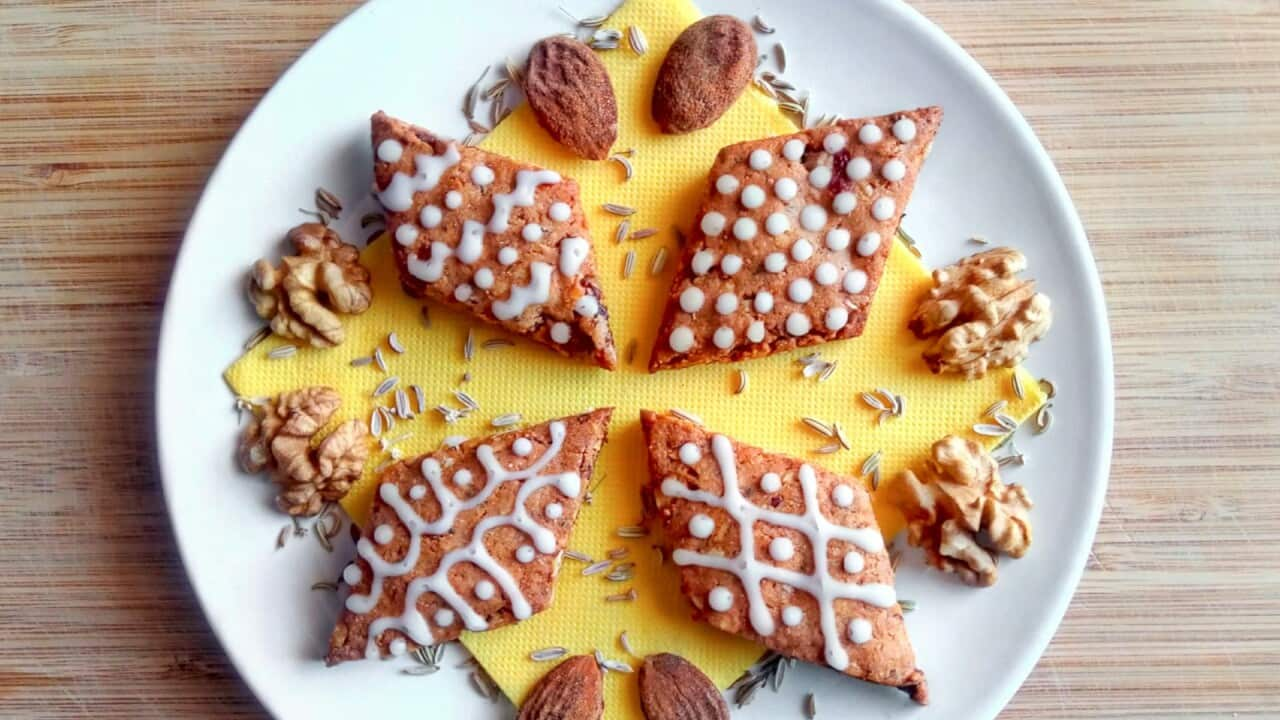Diamond shaped biscuits shining with white icing and liberally studded with rainbow sprinkles sound like the kind of treat that would be served at a children’s birthday party. In Sardinia, however, this biscuit is traditionally made for a different kind of festivity - one that .
, also called pabassinas and pabassinos in Sardinian, are a special festive biscuit made to celebrate All Saints’ Day on November 1 and All Souls’ Day on November 2. Generally speaking pabassini, have come to be synonymous with Sardinian baking, often featuring in platters.
My maternal grandmother used to make pabassini in her native Sardinia over 70 years ago, and today, as our family has spread out, they continue to make these traditional Italian Christmas biscuits everywhere from Rome, where my aunts live, to Melbourne where my mother migrated, and I was raised.
One festive biscuit, a variety of flavours and shapes
Hearty, slightly crunchy and moreish, these biscuits owe their name to the Sardinian word for raisins (pabassa). In my family we make pabassini from a dough laden with walnuts, cinnamon, cloves, aniseeds and lemon zest.

Credit: Tim Macpherson/Getty Images/Image Source
The ingredients used to make pabassini can vary widely.
For Sardinia–born, Queensland based Elisa Mele Seul, the pabassini she grew up eating were made with . Now living in the rural coastal area of Rainbow Beach in Australia, Seul struggles to find the ingredients to recreate the taste of the pabassini she remembers, so she sadly no longer makes them, but the tradition is one she still cherishes.
“Both my nonne and many other ladies in town used to make pabassini that are soft, moist and like little cones. They were absolutely my favourite! I do not know the exact amounts, as most of the things were made ‘by eye’ adding bit by bit and mixing, but definitely there was quince that would be in season … sultanas, almonds, caramelised sugar, minced anise and cloves,” Seul recalls.
Diamonds aren’t the only way these biscuits are shaped either. My nonna would often form hers like small oranges, while in some regions they’re made into , reminiscent of Christmas trees. Some people even shape theirs like the
From Halloween treat to Italian Christmas biscuit
According to Sardinia-based museum operator and guide, Mara Cossu, who runs traditional s, commemorating ancestors is a deeply rooted tradition in Sardinian culture.
Specifically on the evening between October 31 and November 1 which is called Is Animas, Sardinians believe that the dead can return to the living world. Across the island there are many customs upheld to welcome the returning deceased. One of these is offering pabassini to children during a request for treats, a tradition not dissimilar to Halloween. “During Is Animas, each treat collected is taken home and shared with the family, symbolising unity and continuity across generations,” Cossu says.

Each region of Sardinia has its own variation of pabassini. Source: Moment RF / Ellen van Bodegom/Getty Images
Italy–born and Sydney-based and baker, Francesca Giglio whose parents hail from Sardinia, had a steady clientele for pabassini at her Ambrosia Food Creation cafes. Giglio sadly closed her cafes in 2023 but her pabassini were very well known and in fact, she sold them all year round. "A lot of people from Sardinia would order them [pabassini] for Christmas and special occasions... as my Australian customers started to open up and try them, they would also order them to have in high teas," recounts Giglio.
For me, keeping the tradition of making and sharing pabassini alive during Is Animas, when baking Italian Christmas cakes and biscuits, or whenever the craving calls, means my family and I can continue to honour my nonna’s memory and keep our heritage alive.


